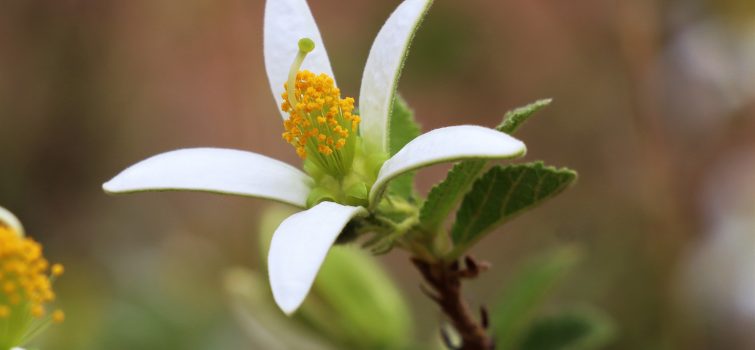The Greatest Love Story
Flowers. Symbols of love, of hope and joy, perhaps of prosperity. Given as gifts for forgiveness, for admiration, adoration, for death and consolation. Their perfume, an intoxicating vapour that excites, makes giddy, sometimes disgusts and even cause you to faint. They hold much power and symbolism to us, but their hidden strength tells of a love story, never heard.
The female flower or flower parts, dressed as a bride to be, excited, flushed with colour and radiance that reflects the suns warmth, that draws so many to her. She is destined for love, her petals neatly arranged like a perfect fitting dress, designed once, and for her only. Her stigma displayed like a crown for all to see, and for her true love to cherish. This is her story of the love she will need to develop her fruit, yet she will never meet her true lover. The male flower or flower parts, dressed as elegantly, he too adorned in fashion for function. His stamens bursting with pollen, waiting for the right messenger to deliver his love to the bride he will never meet. Pollinators, the messengers who will carry his golden parcel of love to the female. Perhaps a beetle in its shining armour, its gleaming carapace finely dusted with pollen, taken from flower to flower, carrying the message of love to each one he lands on. The pollen, like a handkerchief carried by a valiant knight of long ago, a fabric of hope given to him by his lover for him to return someday, but seldom does. The love between the flowers would never endure, were it not for the messengers, all of them caught in this love triangle that started with the simple flower.
There is an array of plants in the world, each unique to their environment and in function within their ecosystem. Through time, their functions have developed, their breeding mechanisms evolved as they learnt to exploit those elements around them in order to succeed. The oldest known plants did not flower, and although pollination occurred between male and female parts or components, the cone bearing plants produced simple pollens that were dispersed by wind or water to their suitable recipients.
About one hundred and twenty-seven million years ago, the first simple flowering plants emerged. The oldest fossil record of a flowering plant was found in 1990 in Melbourne Australia, and is believed to date back about one hundred and twenty million years. It is further believed to be an herbaceous plant (non woody) and only in the mid nineteen nineties was it recognised as a member of the flowering group of plants collectively known as the Angiosperms. Some of the first true flowering plants gave rise in Africa and South America, becoming more diverse with significantly different pollen structures. Fossil pollen records have given us the means to date the origins of flowering plants and their flowers and when and how they became so elaborate and unique.
The early flowering plants produced flowers that were unisexual, having either female or male components. Only about ten million years later, did flowers emerge that contained both female and male parts.
When plants flower, think of it as a marketing campaign. A campaign to target certain pollinators in order for the plants to spread and receive pollen from other plants of the same species. This is a clear indication why there are so many varied flowers; in shape, colour, position, emergence, scent and the lists go on. Targeting a specific market, requires a very specific strategy that must be timed to perfection.
Watching the trees, shrubs, herbaceous plants and grasses flower on the Reserve, indicates their individual target markets, the pollinators. Since we humans are not the target market, the majority of flowers may go unnoticed by ourselves. Perhaps not striking enough or simply too small to catch our attention, the diversity of flowers is prevalent if you take the time to look. The emergence or prevalence of pollinators, has over time given rise to flower development. But which came first, the flower or the pollinator? It would probably be argued that both co-evolved as a result of the other. There would be many factors involved to argue this point in favour of either of them emerging first, a debate for another time. In saying that, if we think of the humble bee, the best-known flower pollinator for modern flowers, and the most varied or diverse group of pollinators today, the bees are by far the most important flower visiting insects. Modern bees emerged about forty-five million years after the first flowering plants did. However, the increase in flower diversification and the emergence of modern bees and their role as pollinators can be ascribed to each other. Bees began to diversify and co-radiate with the emergence of the changing angiosperms, the lovers and the messengers evolving together.
A flower is described as a determinate shoot, that bears sporophylls (reproduction cells). The name angiosperm is from the Greek ‘angeion’ meaning ‘vessel’ and ‘sperma’ meaning ‘seed’. The individual parts of the flower are functional and, in their diversity, comes varied function. Each part has a critical role to play.
The most definitive structure of the flower is the carpel. It is the ‘vessel’ that contains the ovules that develop into seeds after fertilisation. This is the final stage and sole function of the flower – to reproduce, her beauty reduced to the seeds that would sow the future.
The question we were asked and answered in the ‘Just Ask Us’ insert for this month, was the very seed required to get this story told. There has always been an array of flowers on the Reserve, and each year we have spent here at Makweti, we have witnessed different flowering results. The timing of the warm spring days, along with early rains and the emergence of pollinators are factors that vary year on year. These factors have a definitive bearing on when certain plants flower and if they won’t flower at all. A little rain, with warm spring days and wind that forgot August has past, gives rise to a different set of flowers. Good early rains and cooler temperatures at the start of Spring, trigger a response in other flowering plants, setting the stage for them to blossom. Some are fickler than others, but for the most part we see some familiar faces shining on the Reserve each year, ready for the spectacle that is Spring and later Summer.
Driving up to the Waterberg in Spring, you will be greeted by the ‘bride of the bushveld, the common wild pear tree, lined up along the road in wonderful splendour. A welcome reminder that Spring is coming. Their glory is short-lived, the flowers turning from a striking white to pale pink, to a faded brown within a few weeks.
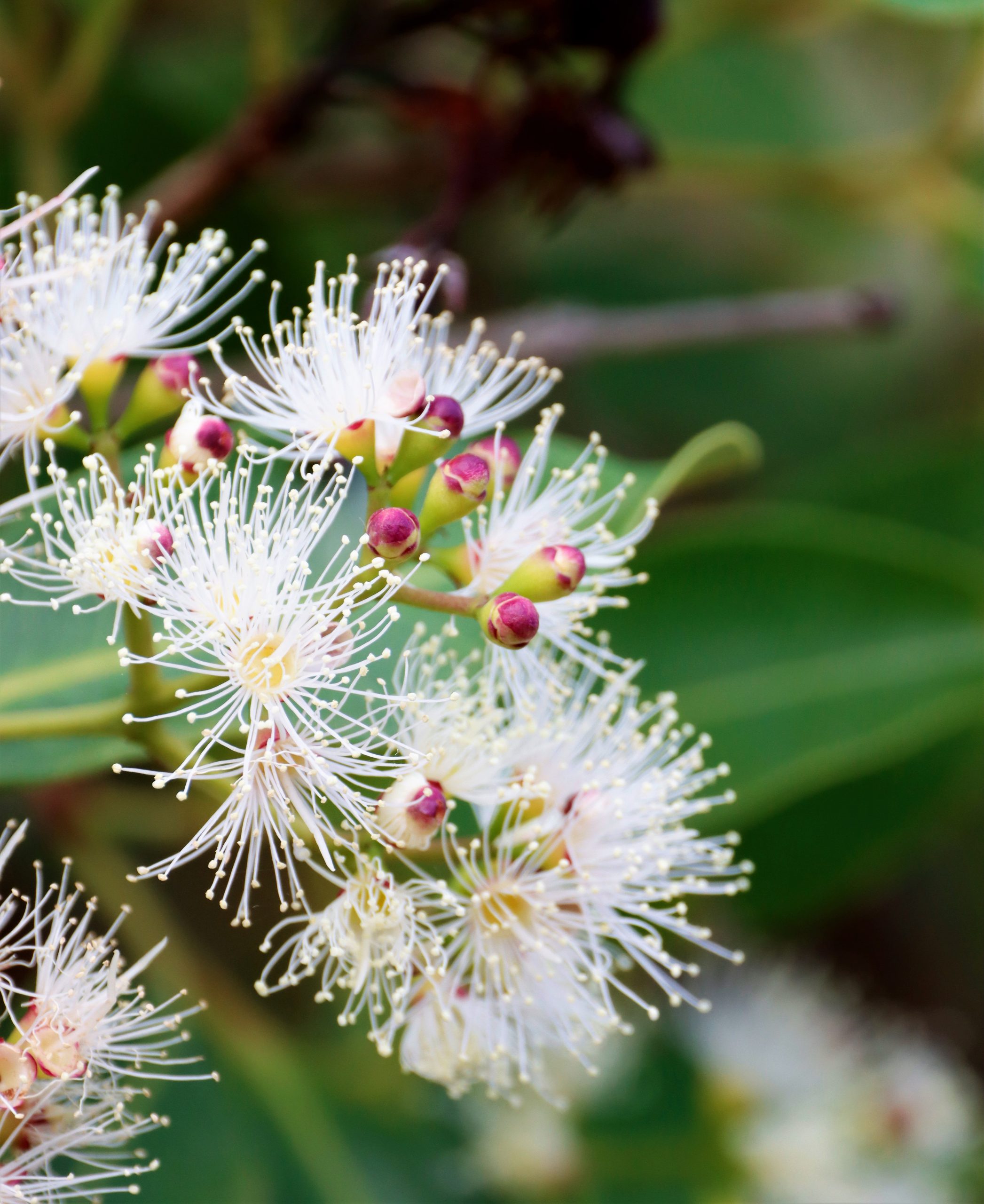
The avenue that leads down through the Reserve to Makweti Safari Lodge, is lined with the rich dark evergreen Water Berry trees. They flower quite early, if a little rain arrives to prod the buds awake. Their delicate white filaments, arranged in groups, with each flower grouping to form a bouquet. At night, their scent a sweet jasmine like perfume, is intensified by the lack of wind as the air hangs in the narrow valley they line. During the summer they will flower in abundance. A number of different pollinators can be found on the flowers throughout the year, like a busy market place, with customers scurrying about to collect their sustenance. This flowering season culminates in hundreds of hawk moths of varied species hovering back and forth over the flowers by night, their eyes giving off an eerie red glow like tiny pomegranate seeds suspended in the spotlight as we pass through them on our way back to Camp. The berry produced by the flowers is edible although does not taste of much, somewhat bitter. It provides good nourishment to many vertebrate species and is a good source of Vitamin-C and other acids for us.
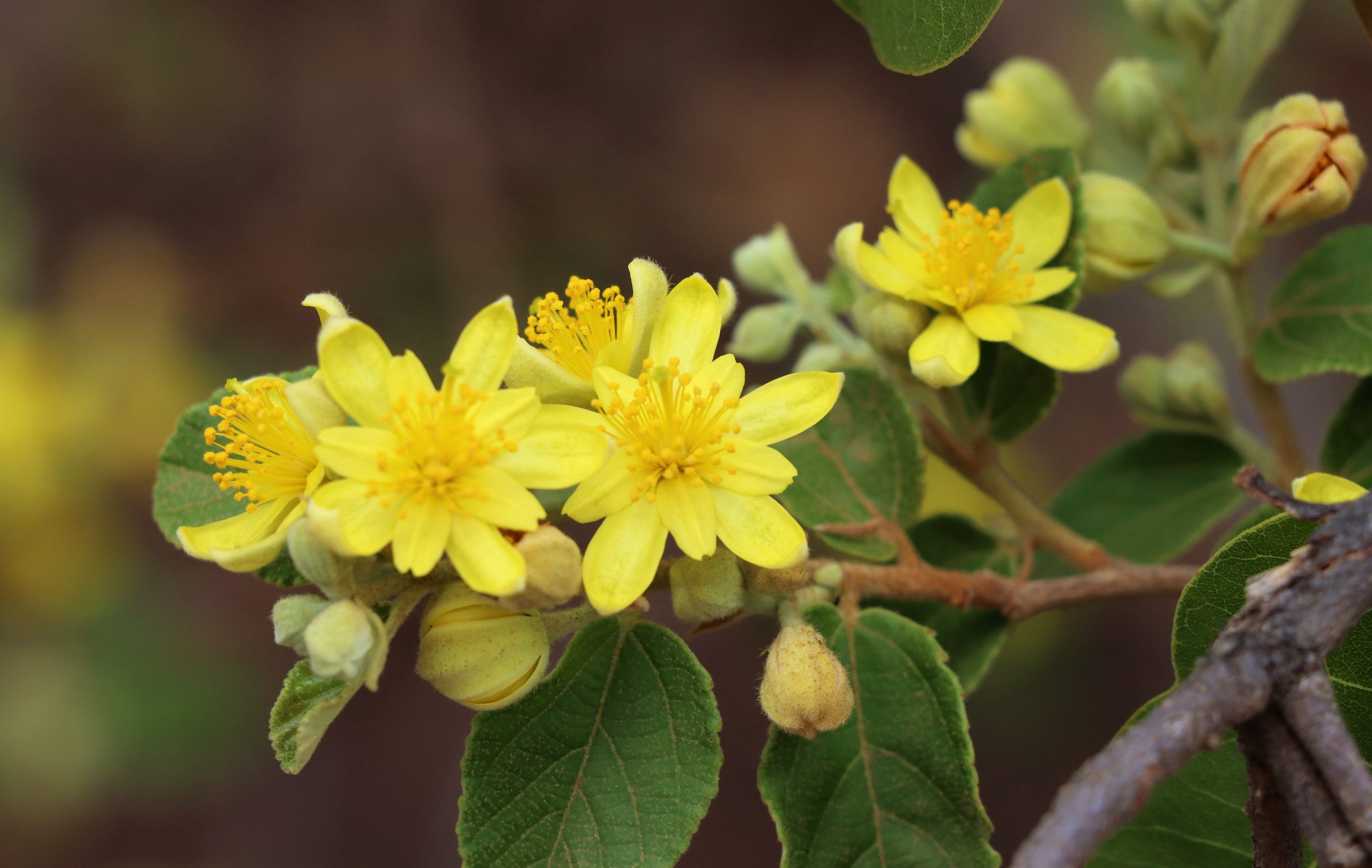
The beautiful butter-yellow flowers of the Sandpaper Raisin, can be seen in most areas around the Reserve where pockets of rain have fallen. Their splendour transforming into a fruit, like a raisin, that is delectable and has in the past been turned into a jam. The beauty of the flower in contrast to its name, which derives from the sandpaper texture of the leaves. Perhaps a deterrent to any would be consumer wishing to over exploit the flowers beauty.
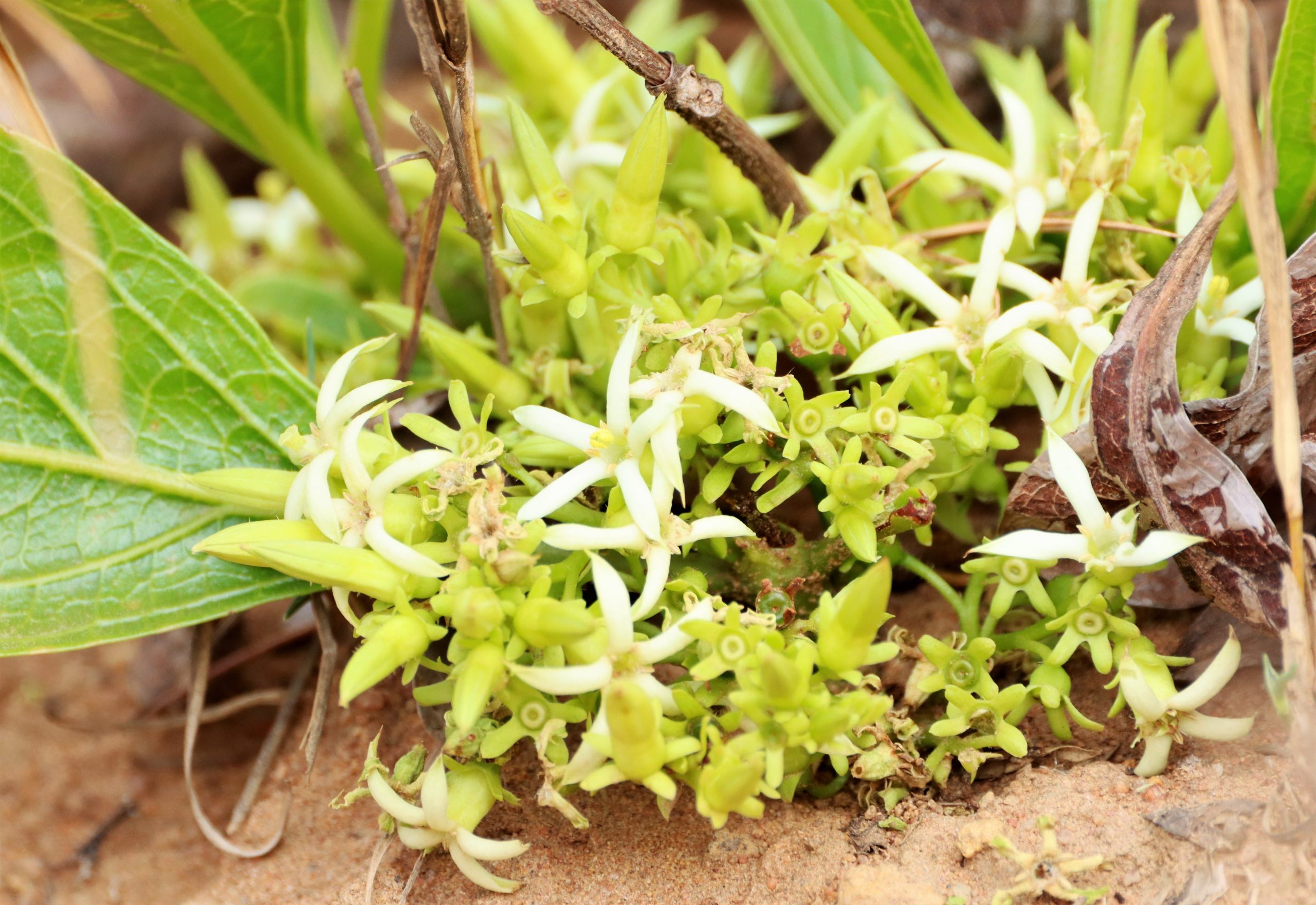
Tucked in the undergrowth, the large bright green leaves of the Sand Apple, are striking in their little colonies. These large green parasols shielding the delicate flowers developing beneath. The leaves are nutritionally poor, and not taken by many large vertebrate herbivores. Their function; to provide energy through photosynthesis and protection to the flower buds at their feet. The tiny little white flower, later transforms into a large fleshy yellow apple-like fruit.
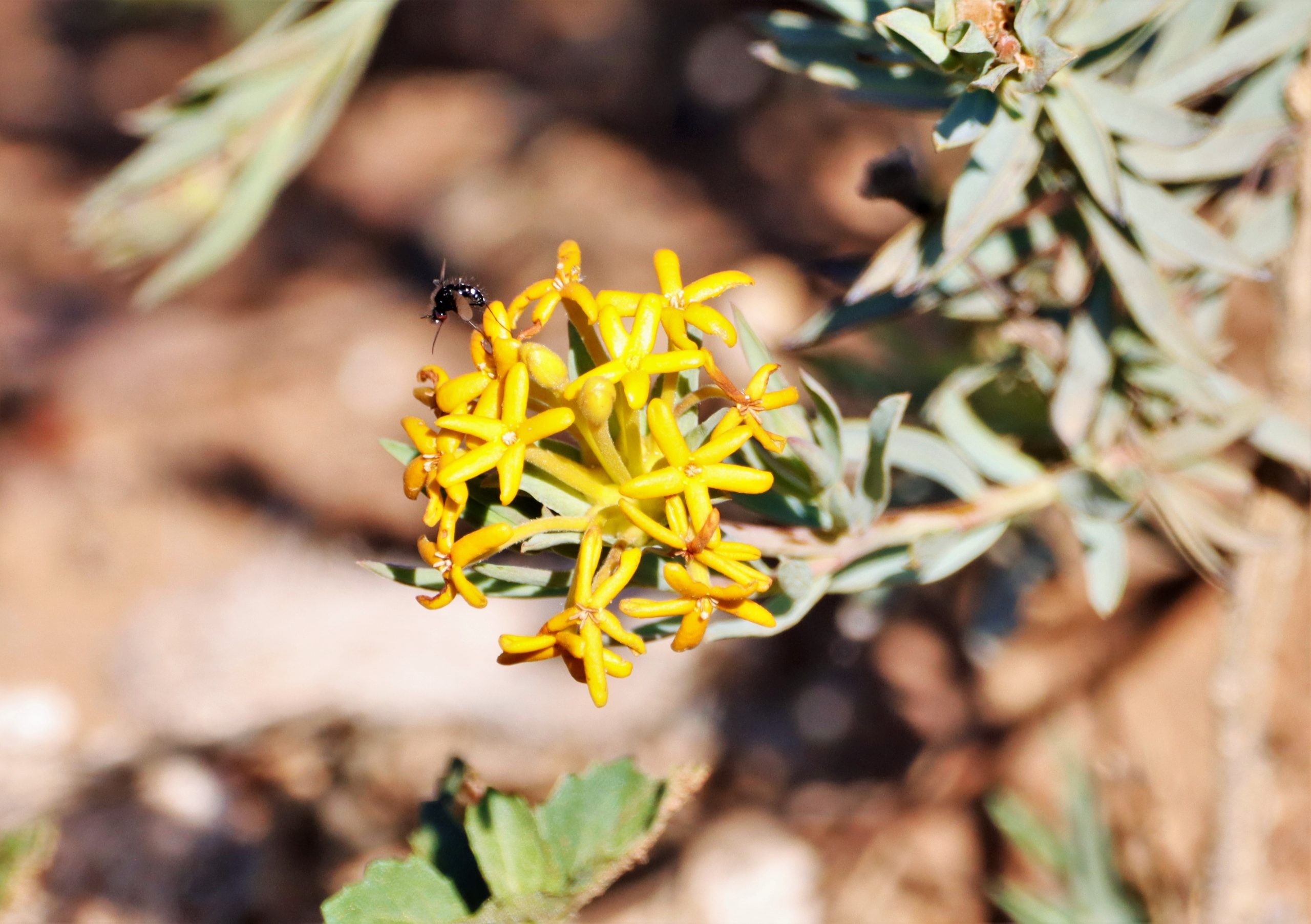
The high lying areas above Makweti Safari Lodge, are abundant with the yellow bunches of the ‘Keriebos’ or ‘Currybush’, the mustard colour of the flower likely giving rise to its colloquial name. Its beauty carries a mystifying traditional use. The various Gnidia sp. in southern Africa are used widely for their medicinal properties. This particular species is used as a divining torch to discover thieves.
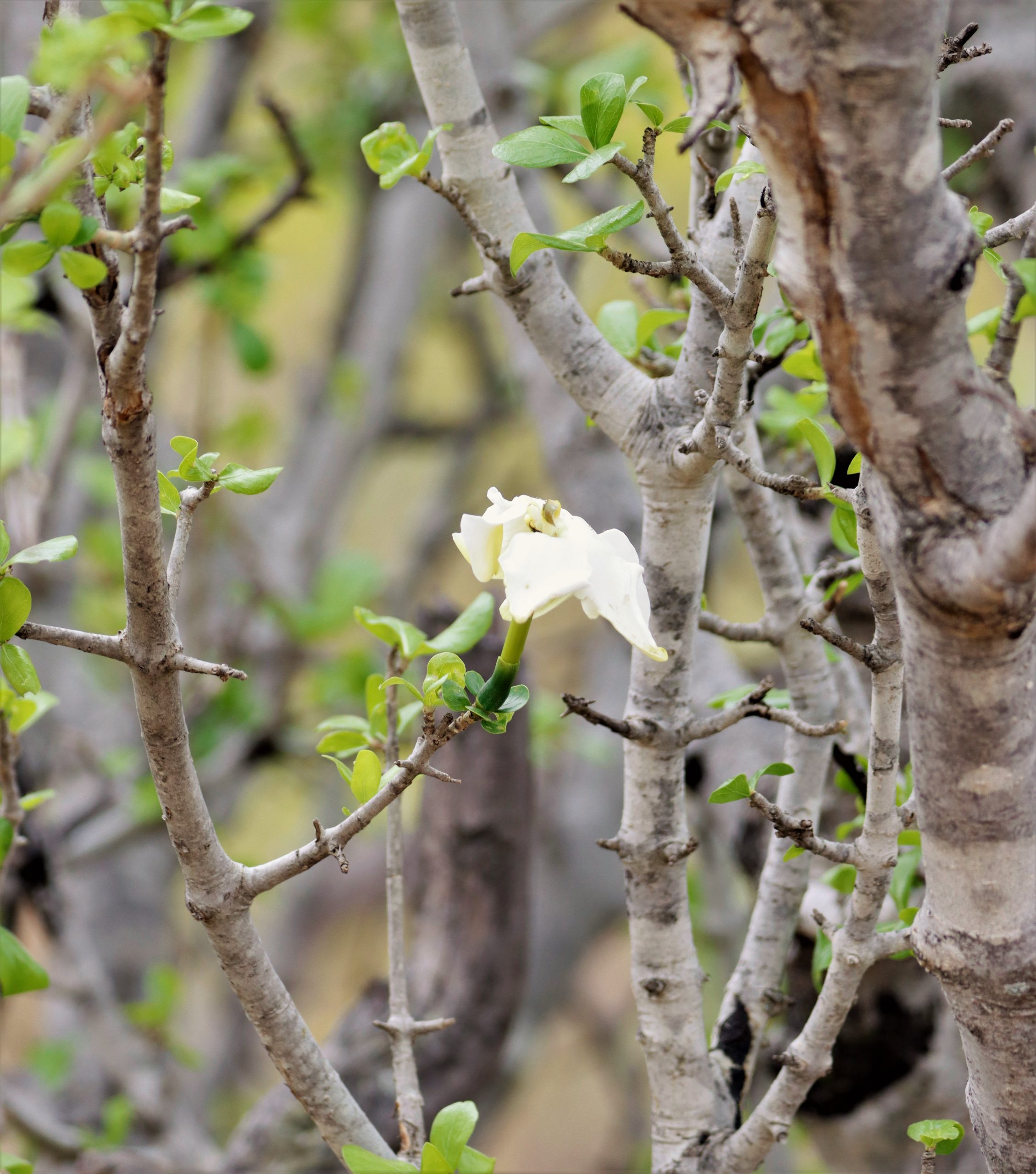
The rather lazy flower of the Savanna Gardenia, hangs like a spent tissue amongst the chaos of branches, too tired to push up her petals, not bothered to display her beauty. This Gardenia sp. is planted around Zulu houses and are believed to provide protection from lightning. Perhaps the flowers are tired of being struck down. We find these trees growing around the Reserve, with a number of beautiful specimens growing in the Taaibos river valley below the Camp.
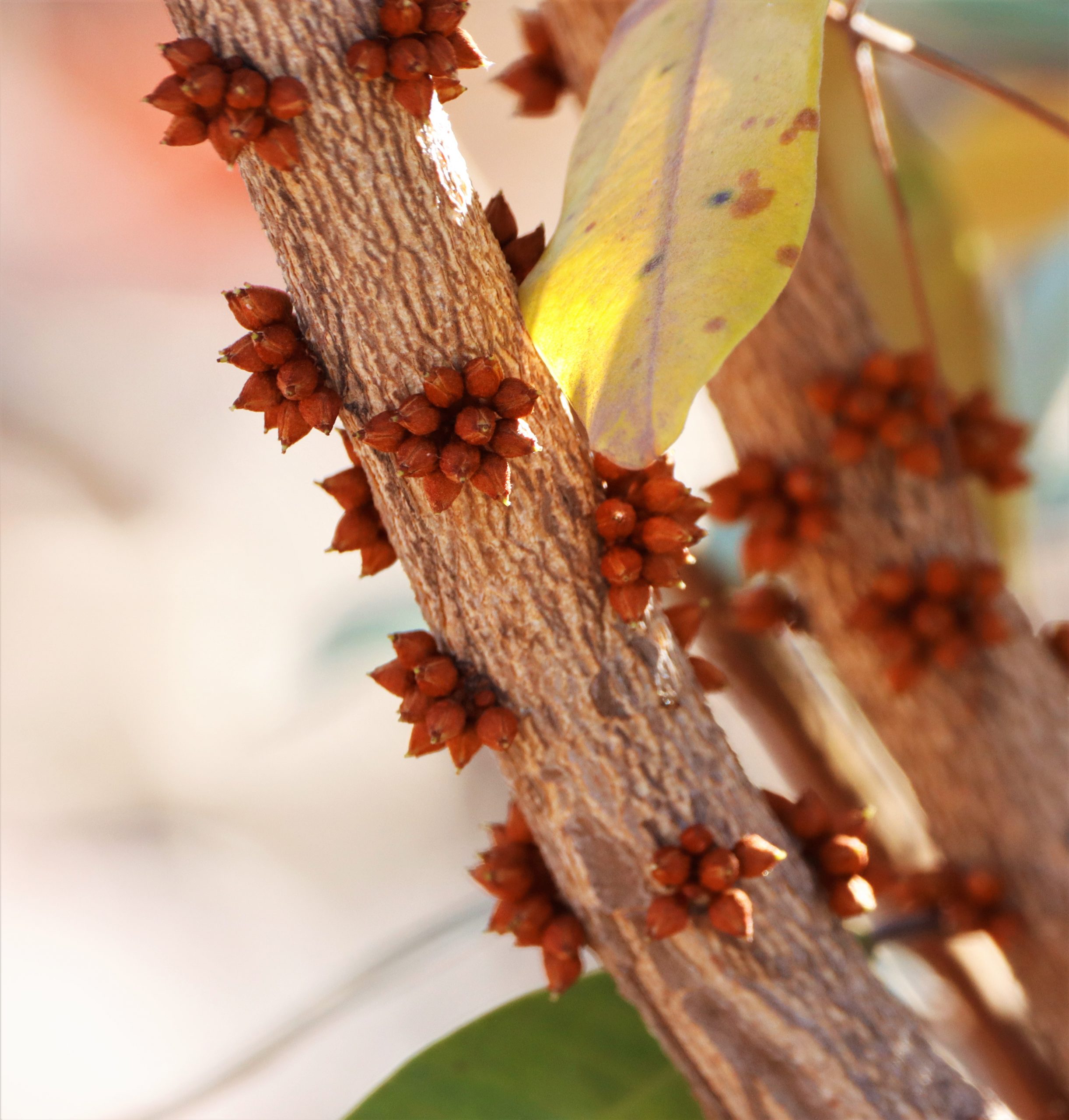
The Milk plum. A favourite on the Reserve, is enjoyed by all. Elephants love the plants woody root stock, and will spend hours laboriously pushing rocks away to get to it. Often you will find the branches of the milk plum lying in the road, the leaves scattered, unwanted, with the branches lying naked, stripped of their bark. A little snack on the go for the large pachyderms. The little flower buds don’t amount to much, but oh boy what emerges as a result of the little effort put into dressing up the flower, more than makes up for this lack of enthusiasm. The fruit produced is a beautiful plum like fruit, born straight of the stems. To find such a delicacy to enjoy, you must be patient. You also need to fend off baboons, monkeys, elephant, birds and other animals to have a small chance. You can almost picture a troop of baboons sitting watching the fruit ripen, waiting for that moment, to rush forward and grab the resulting prize. Like a game of snap, you have to be quick or it will be gone until the next season.
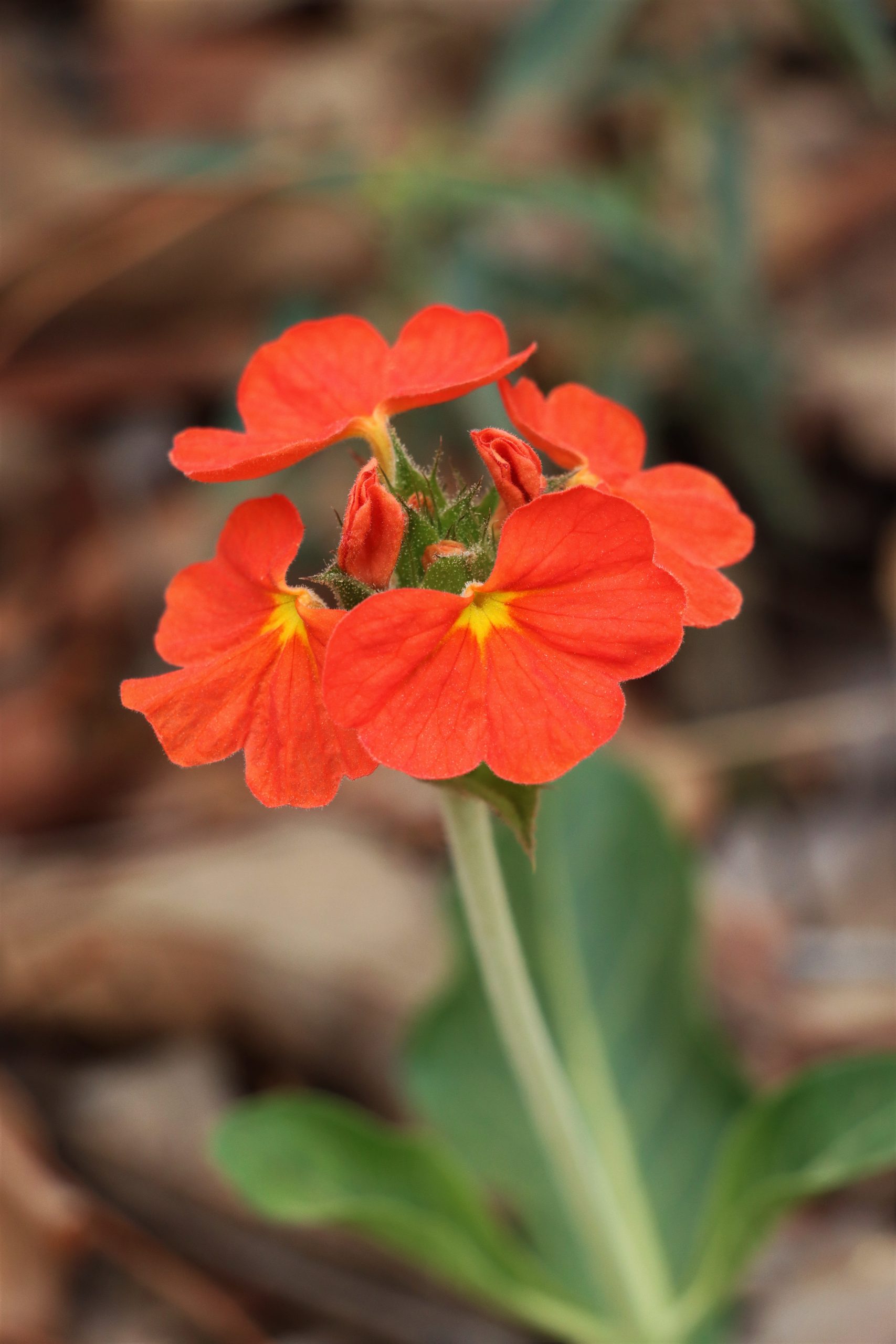
The bright orange Bushveld Crossandra, can be found in many areas on the Reserve. A hardy plant with a tolerance to direct sun, it is quite standout in appearance although equally shy.
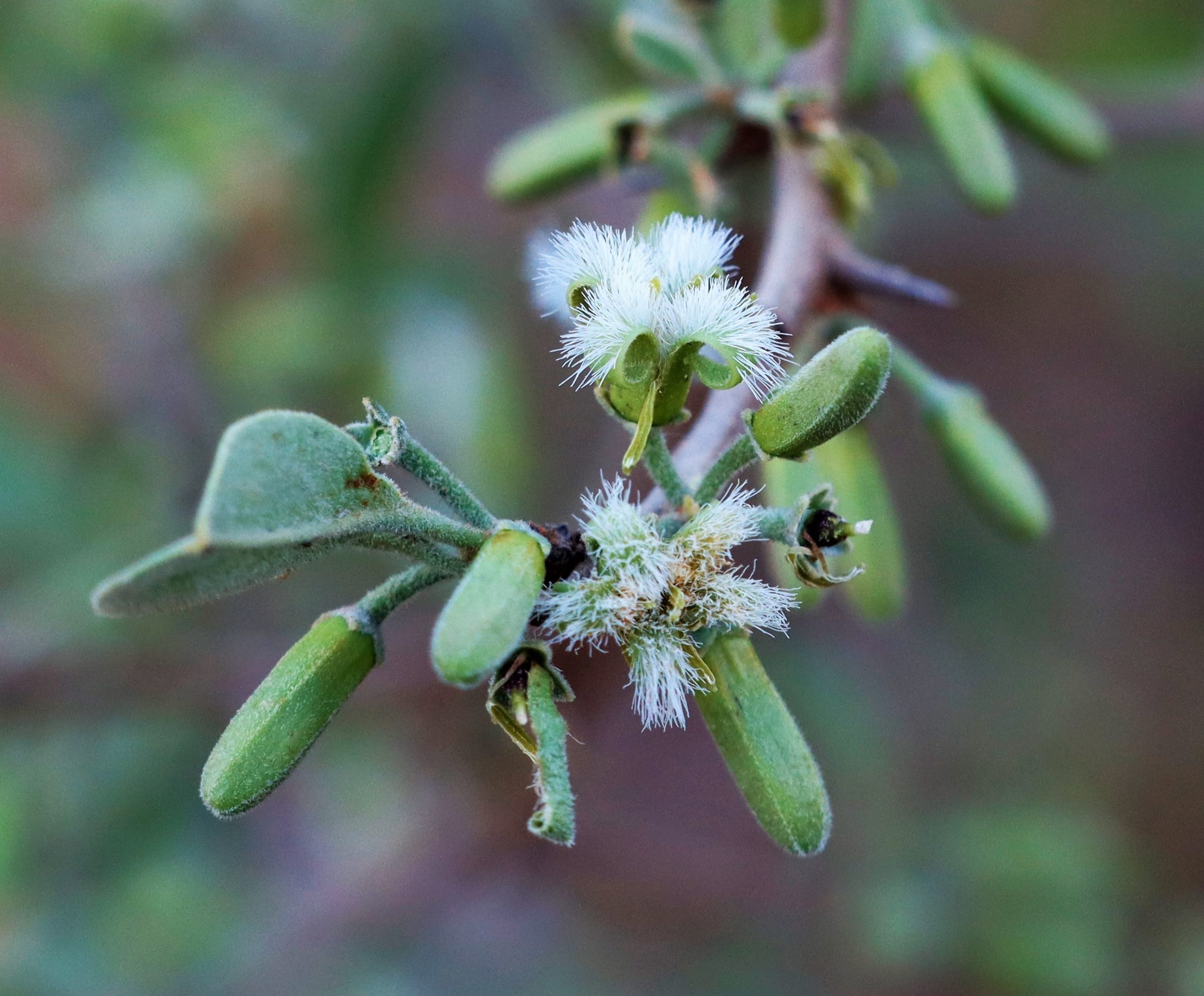
In summer, when most flowers have already transformed into fruit, there is one shrub that is well known. The Sour Plum. Driving around the Reserve, the fruits bright red little jackets lie scattered all around. The only evidence that a baboon has been around, and that the Sour Plums are being devoured. I have never seen the flower of this tree and for the first time, this year I have witnessed the emergence of this tiny delicate white flower, emerging from what looks like a green, woolly, slipper-like capsule. The flower is only a few millimetres large, or small, yet emerges into a large fruit almost four-centimetres long. The fruit is delicious, yet sour near the seed.
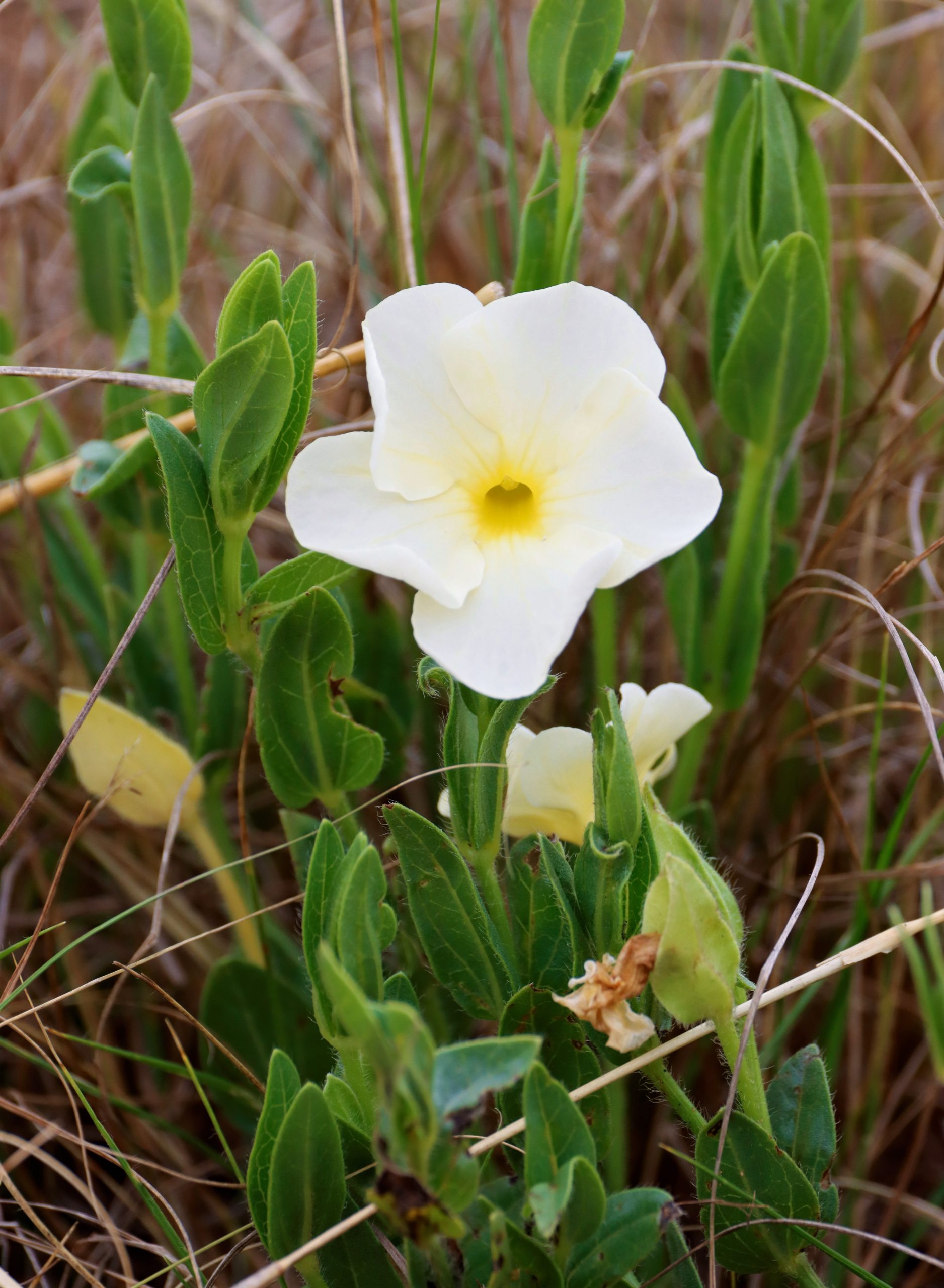
One morning this October, we were looking for leopard and came across a mud wallow. We had heard rumours of a family of bushpigs being around the wallow and thought this would be a good attractant for a hungry leopard. Stopped close to the muddy patch, that was devoid of any mammalian life, we spotted this little Natal Primrose. Our attention quickly turned to this spectacle and we forgot all about the leopard and bushpigs that were not there and focussed instead on what was.
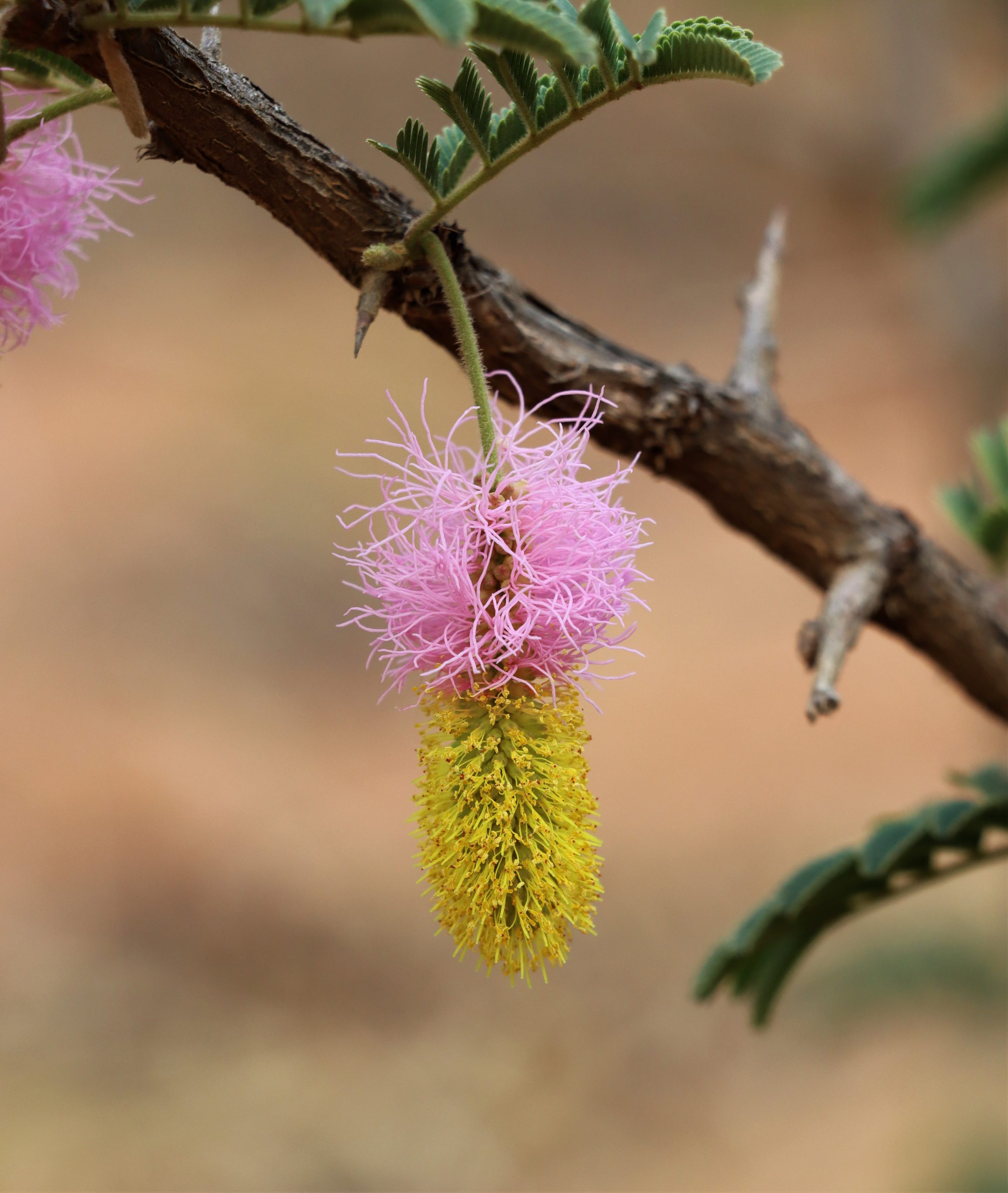
The unmistakable clown of the bushveld flowering world. The Sickle bush is a well-known inhabitant of the bushveld both for its good and bad attributes. Not to be taken too seriously, the beautiful flower produced looks a little like a mini pineapple dressed in a tutu. A symbol of perhaps the lighter side of the most often harsh African savanna system.
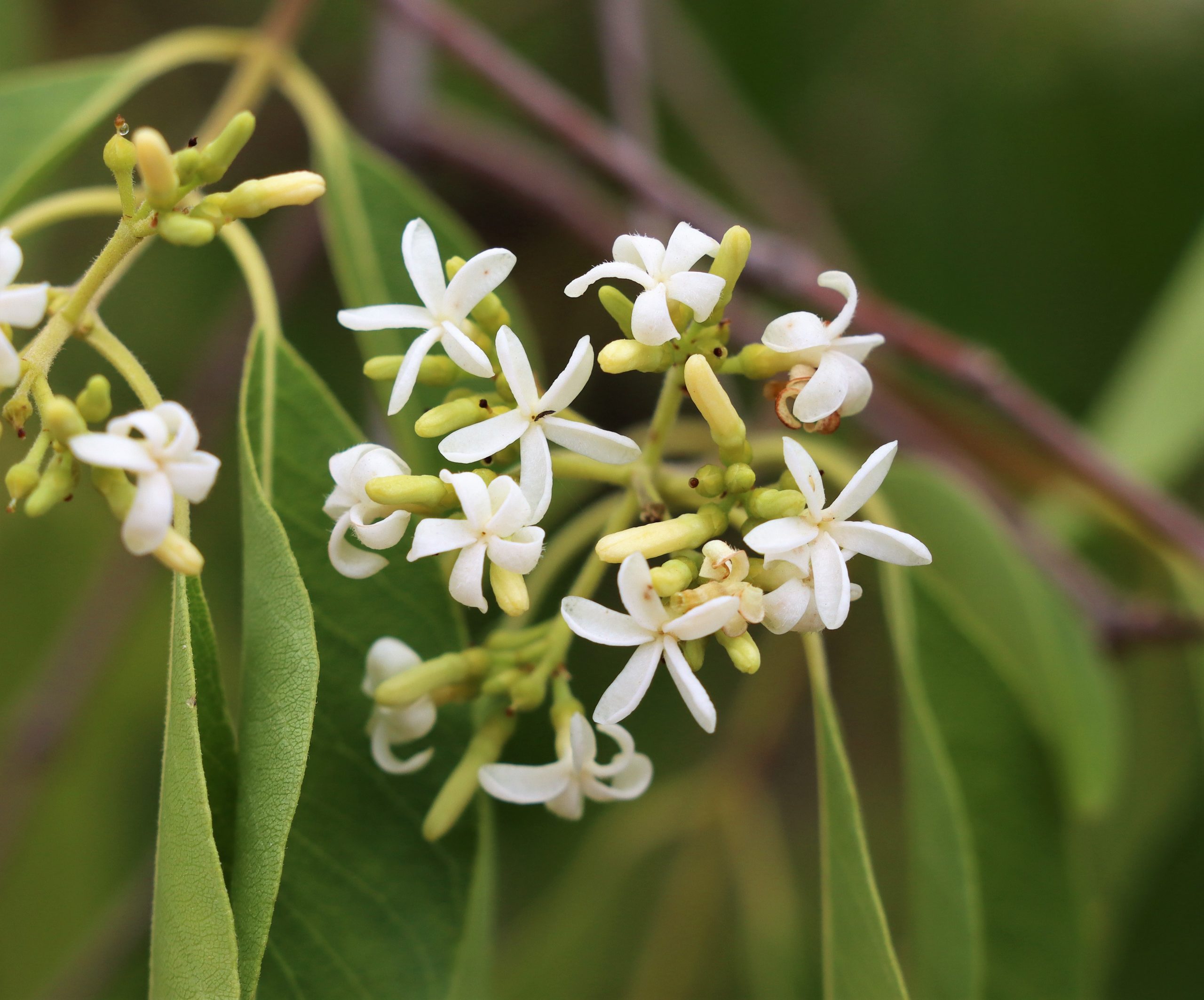
The Horned Pod tree flower is as spectacular in sight as astounding in scent. The collective odour of the tiny little flowers is intoxicating. As with most flowers we have discovered, the resulting fruit is a double horned pod. The plant produces an incredibly adhesive latex that is toxic. This latex was used as an adhesive by ethnic people of a time gone by, to glue their arrow heads to the arrow shaft. These trees have just begun to flower.
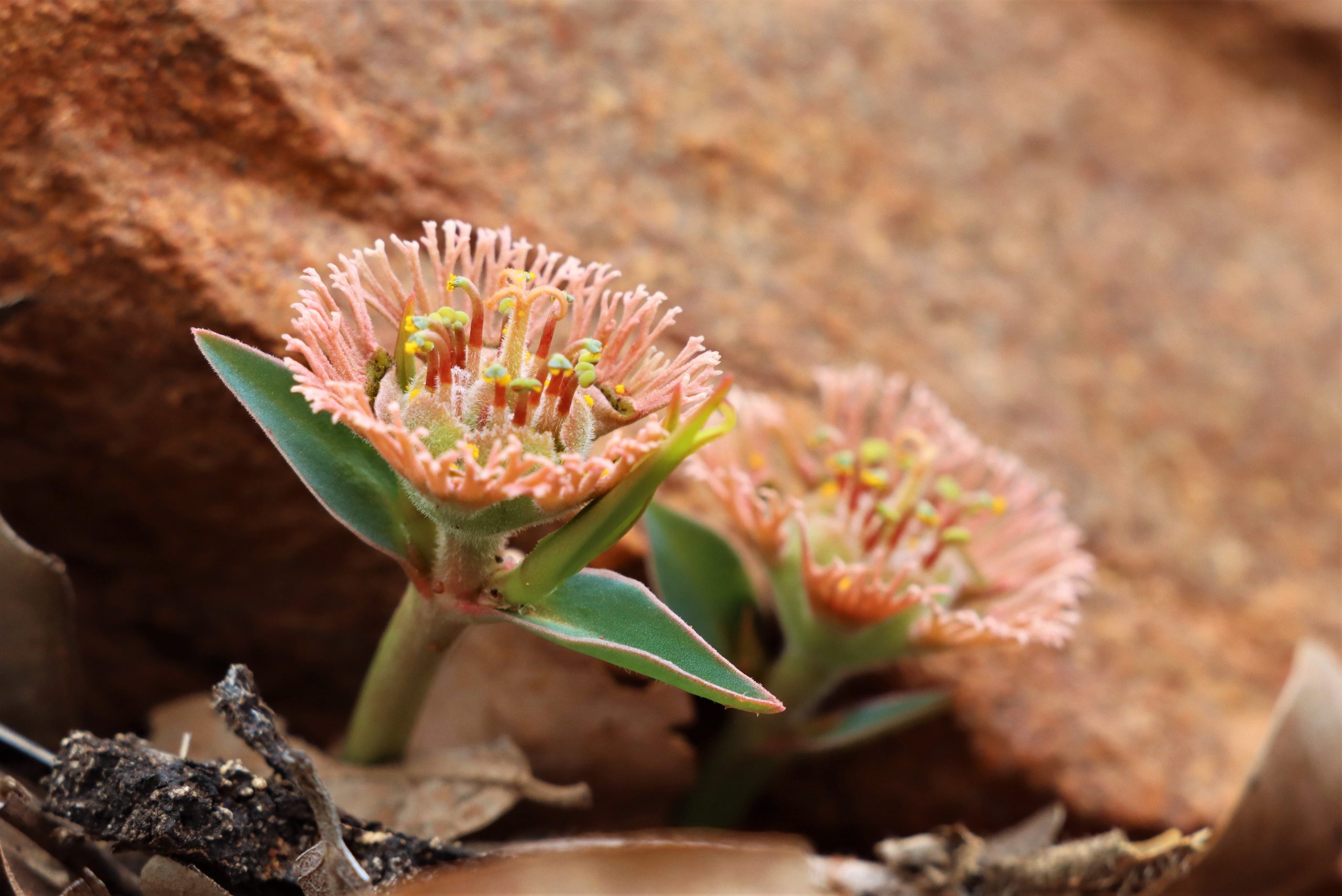
Sometimes, the flowers we find are simply the cherry on a cake. Something that glistens and shines in colour and light, but below it sits a large cake or delicacy hiding from potential devourers. The elaborate little ‘melkbol’ flower of the Euphorbia trichedenia, peaks out below a small piece of rock on the access road of Makweti. I discovered the flower one afternoon when I got out of the vehicle to inspect a piece of bone. The little pinkish orange flowers, the size of a two-rand coin, blending in rather well with the leaf litter around them. I did not know what they were and had to investigate. On the Welgevonden website is a link to the Welgevonden Flowers website setup and created by the Reserves Research Ecologist, Dr Jonathan Swart. Another valuable source of information providing insight to my conundrum was the Waterberg Bioquest website, setup and managed by Warwick Tarboton, who we have made mention of before. Both these sources provided the answer I was looking for. From this initial identification, I was able to pursue this species further within my other resources, the good old book.
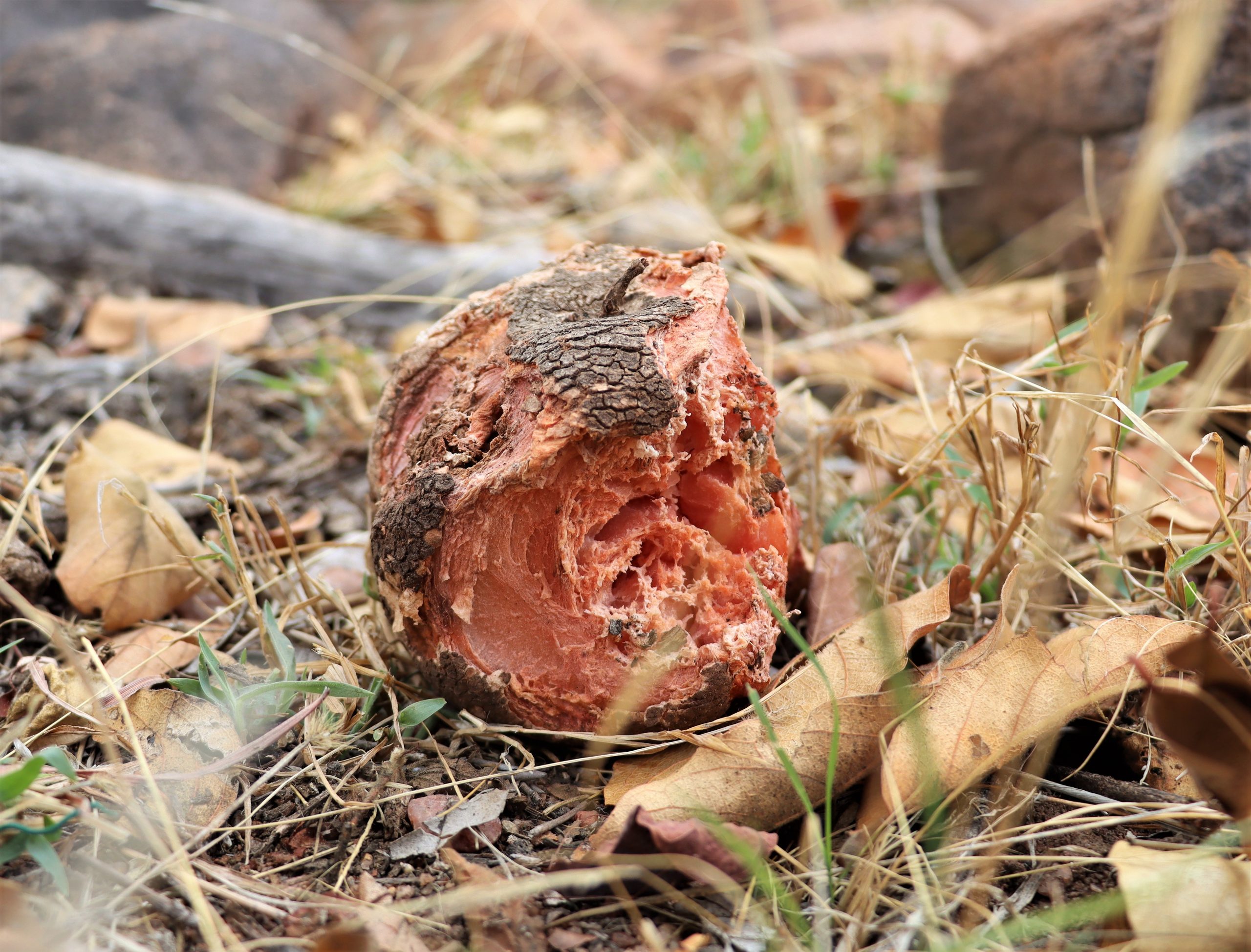
What was interesting, was that a few days prior to my discovery of these little flowers, Jessica had come across a large potato-like tuber on the pathway from the Main Lodge to the Office. A baboon had been carrying it and eating it, which Jessica disturbed as she emerged from the Kitchen. The baboon dropped its ball and moved off. I had a look at the left-over piece and was not sure what it was at the time. Having identified the little flower I discovered, I learnt that what the flowers were hiding, was this very thing. A large caudicum, buried in the ground. I went back to the baboons’ ball that was left lying next to the path like a half-eaten dried out apple. Belonging to the Euphorbia genus, it has the distinctive milky latex that this family of plants are well known for. The colloquial Afrikaans name ‘melkbol’ is derived from this latex, giving it a ‘milk ball’ appearance.
I have seen Elephant with one of these before on the Reserve, popping it into its mouth like a large muffin and at the time had paid little attention to it, as it was a fleeting experience that I was not quite sure I had witnessed.
So often we can tell the time year, by watching the changes in the bushveld around us. The Maroela trees fruit in late January, peaking around March and April, marking the end of Summer. The Golden Orb-web Spiders spin their webs in April, a sign Easter is near and Autumn is on its tail. For certain as we move into November, the unmistakable smell of the silver cluster leaf tree will fill our nostrils. Something we cannot look forward too, its pungent odour filling the air for three weeks.
As the rains continue to arrive and fall more steadily, so too will the arrival of the flowers and their little messengers. The flowers becoming more elaborate in order to accommodate the picky needs of their pollinating friends. The absolute best for last. After all, the most elegantly dressed and most important guests at any party, the Queen, always enters the ballroom last.
Before you pick a flower, take a moment to consider her duty to her species, her messengers, her environment and our wellbeing. The flower that looks so beautiful, that we would in a pinch, destroy its meaning must endure for everything around it to.
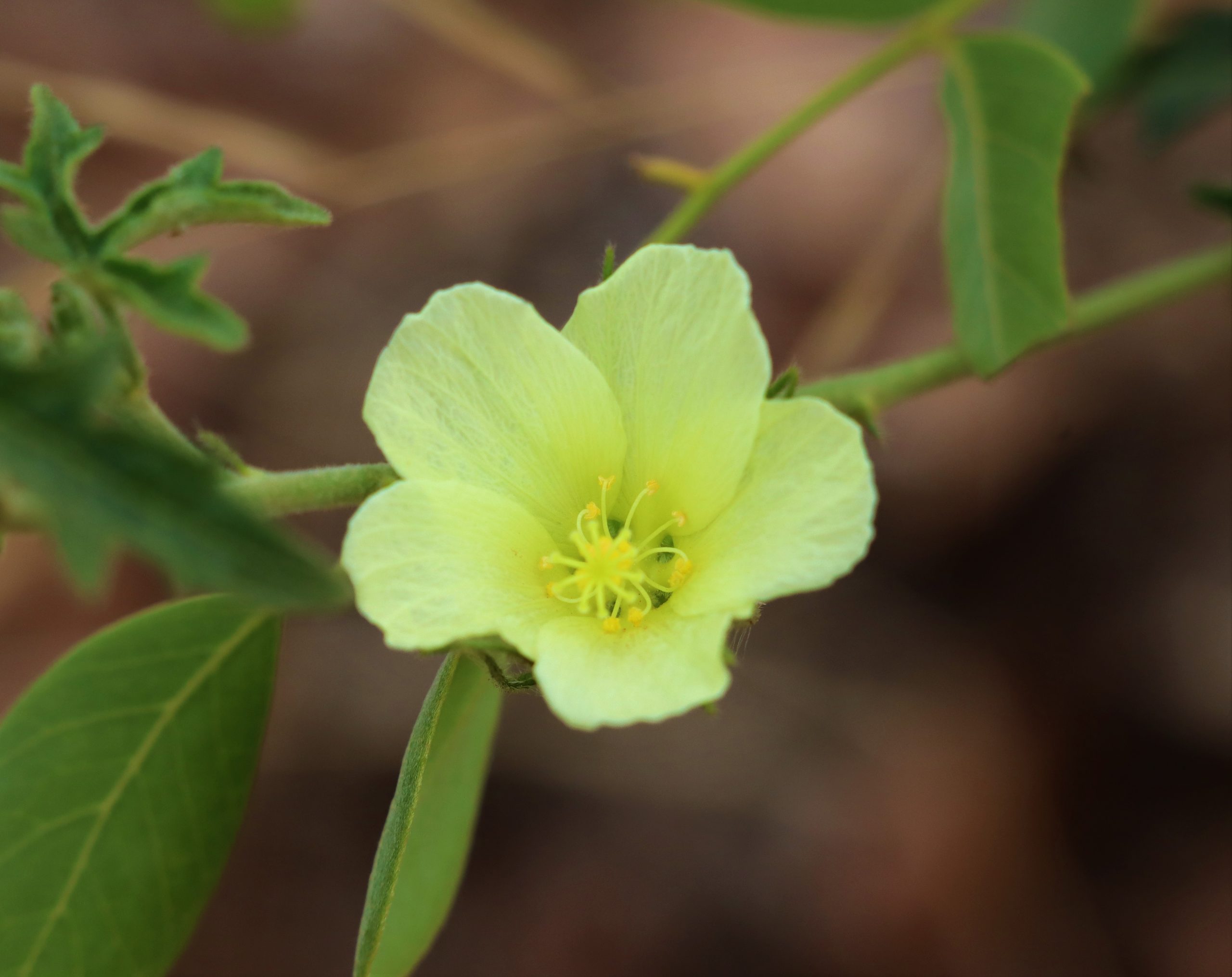
There are many flowers still to be discovered and every day I head out I encounter a new one for my records. Some of them only last a day or two and so having my camera with me at all times, has become a must.
Text – Neil Davison
Photographs – Neil Davison
References:
- 30 years of personal observations by the author on various Reserves in South Africa including Welgevonden Game Reserve
- P. H. Raven, R. F. Evert, S. E. Eichhorn, Biology of Plants, 5th Edition, Worth Publishers, New York, 1993
- B. van Wyk, P. van Wyk, Field Guide to the Trees of Southern Africa, Struik Cape Town, 1997
- B. van Wyk, S. Malan, Field Guide to the Wild Flowers of the Highveld, Struik, Cape Town, 1998
- E. Pooley, Field Guide to the Wild Flowers of KwaZulu Natal and the Eastern Region, Natal Flora Publications Trust, Durban, 1998
- www.welgevonden.org (Wild Flowers link created by Dr J. Swart)
- www.waterberg-bioquest.co.za (Waterberg website managed by Warwick Tarboton which includes Flora and Fauna)

